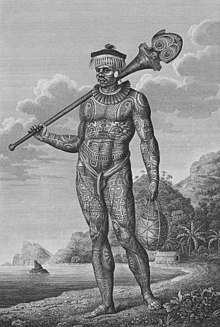Status symbol

A status symbol is a visible, external symbol of one's social position, an indicator of economic or social status.[1] Many luxury goods are often considered status symbols. Status symbol is also a sociological term – as part of social and sociological symbolic interactionism – relating to how individuals and groups interact and interpret various cultural symbols.[2]
Etymology
The term "status symbol" was first written in English in 1955,[3] but from 1959 with the publication of the bestseller "The Status Seekers" greater distribution. There, journalist Vance Packard describes the social strategy and behavior in the USA.[4]
By region and time
As people aspire to high status, they often seek also its symbols. As with other symbols, status symbols may change in value or meaning over time, and will differ among countries and cultural regions, based on their economy and technology.


For example, before the invention of the printing press, possession of a large collection of laboriously hand-copied books was a symbol of wealth and scholarship. In later centuries, books (and literacy) became more common, so a private library became less-rarefied as a status symbol, though a sizable collection still commands respect.[5]
In some past cultures of East Asia,
Societal recognition
Status symbols also indicate the cultural values of a society or a subculture. For example, in a
A
In many cultures around the world, diverse
Body modifications
This section needs additional citations for verification. (November 2017) |

The condition and appearance of one's body can be a status symbol. In times past, when most workers did physical labor outdoors under the sun and often had little food, being pale and fat was a status symbol, indicating wealth and prosperity (through having more than enough food and not having to do manual labor). Now that workers usually do less-physical work indoors and find little time for exercise, being tanned and thin is often a status symbol in modern cultures.
Ancient Central American
Material possessions


Status symbols are also used by persons of much more modest means. In the
A common type of modern status symbol is a prestigious
See also
References
- ISBN 0-205-15550-2.
- ^ The Three Sociological Paradigms[dead link], from The HCC-Southwest College Archived 2004-08-05 at the Wayback Machine, December 2008.
- ^ "status seeking – Search Online Etymology Dictionary". etymonline.com. Retrieved 2023-08-12.
- ^ "The status seekers; an exploration of class behavior in America, Longmans, 1959". worldcat.org. Retrieved 2023-08-12.
- ^ "Are book collectors real readers, or just cultural snobs? – Aeon Essays". aeon.co. 2016-10-20. Retrieved 2023-08-12.
- ^ "Real Men Have Dueling Scars". Stuff You Missed in History Class. 2009-05-04. Retrieved 2017-12-18.
- ^ Hayden B 2003. Were luxury foods the first domesticates? Ethnoarchaeological perspectives from Southeast Asia. World Archaeology 34(3)
- ^ a b "Maya Culture". Guatemala: Cradle of the Mayan Civilization. authenticmaya.com. Archived from the original on 2012-05-07. Retrieved 2012-04-13.
- ISBN 2-88449-028-0.
- ISBN 1-56024-801-7.
- ^ ISBN 978-0-13-270118-1. Retrieved 10 September 2013.
- ISBN 978-1-4528-8253-6. Retrieved 10 September 2013.
- ISBN 1-873410-28-X.
- ^ Merriam-Webster. Jet set. Accessed 2013-10-02.
- ^ J Brooks. American cigarettes have become a status symbol in smoke-saturated China. 1995.
- ^ Yusuf Ziya Özcan, Abdullah Koçak. Research Note: A Need or a Status Symbol? 2003
- ISBN 978-0-620-44310-4. Retrieved 10 September 2013.
- ISBN 978-1-4759-7167-5. Retrieved 10 September 2013.
Further reading
- Vance Oakley Packard: The status seekers: an exploration of class behaviour in Amerika. Harmondsworth, Pelican books, 1963. OCLC 762112945
- Samuel I. Hayakawa: Symbol, status, and personality. New York, Harcourt, Brace & World, 1963. ISBN 9780156876117
- Pierre Bourdieu: Distinction: a social critique of the judgement of taste. London/New York, Routledge, 1984. ISBN 9780674212800
